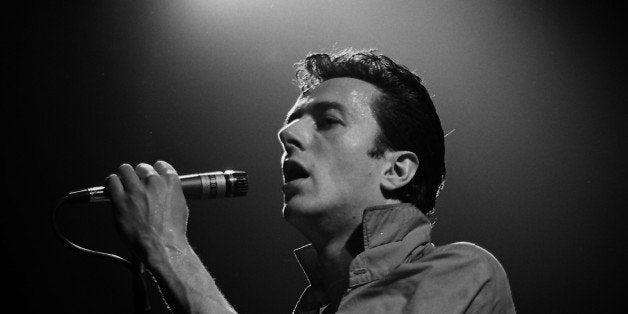
On July 2nd 1982 -- at the age of 12 -- sitting just inches from my plywood cabinet speakers listening to the DJ on WLIR (slogan: "Dare to be Different"), I fell in love with radio and The Clash. Four beats into "Rock the Casbah," I was hooked. I felt a euphoric joy and a sudden adrenaline rush -- it was the very best thing I had ever heard, and that song -- with those unmistakable beats -- and the memory of that experience, still evokes an emotional response in me 33 years later.
Here's the scientific reason why. At iHeartMedia we've researched the impact of sound on our listeners and how it influences the effectiveness of the advertising campaigns we run for our clients. Working with a company called Lightwave, we asked people to wear a device that measured factors including galvanic skin responses, blood pressure, heart rate and temperature -- and played them hundreds of sound clips to determine their response, everything from nature sounds to music, advertisements, video games and more, and recorded their responses. For example, we played the "shark theme" music from Jaws, the powerful trumpet sounds from the movie Rocky, Beyonce's "Crazy in Love", crickets chirping and even Budweiser's Real Men of Genius jingle. What we saw in the numbers and wave patterns in our data visualizations was that sound got the brain firing across-the-board showing both physical and emotional engagement.
The next step was to determine how the brain encoded sound input vs.visual input by conducting a neuroscience study using MRI-like imaging. In one test case we used a trailer from The Expendables 3 movie, playing participants the same ad twice -- once as a radio ad and then as a TV ad. The memory encoding for the radio ad was higher on average relative to that of TV -- in fact, at the point at which the movie's name is mentioned in the ad, memory encoding was 220 percent higher for radio than for TV, and radio outperformed TV in seven of our eight subsequent tests, with memory encoding during key brand communication points peaking at higher levels for radio vs. TV.
Here's why memory encoding matters: It's the one measure that has repeatedly and strongly been associated with consumer choice and changes in purchase behaviors. It also lends scientific explanation and credence to many of the advertising effectiveness studies that have been conducted over the last 18 months, which have shown that audio advertising delivers a higher return on investment than any other medium including TV and digital.
One study from Nielsen Catalina Solutions, showed that brands averaged a sales lift of more than $6 for every $1 spent on radio ads -- an ROI double that of even the best results from many recent studies of digital or TV media. Another study done with INMAR, a logistics and analytics company, showed that one in two shoppers have had a radio ad inform their purchase and that 73 percent of people said radio ads significantly influenced their purchase decisions. Lastly, a survey conducted by the University of Southern California found more than half of survey participants said they trust brands, products and services that a radio personality talks about on air. And shockingly, Nielsen's recent Q1 2015 Total Audience Report shows a dramatic shift in consumer media consumption, with radio delivering a 93% weekly reach for consumers 18+ while television viewership fell dramatically to only 87% weekly reach. Millennials in particular are choosing to consume content from other sources and, among this influential audience, TV has fallen to third behind radio and smartphones.
Studies have also shown us that the average human attention span in the year 2000 was 12 seconds. Fifteen years later that number fell to 8 seconds, and to add some context around that, the average attention span of a goldfish is 9 seconds. Content overload has created this phenomenon, and today the challenge for marketers and advertisers is to break through the clutter. Sound, and its power to elicit an emotional response and deliver a memorable message, allows marketers to tell their story and spur a consumer to action.
So, is there an actual scientific reason why the memory of the first time I heard The Clash has stayed so vividly with me all these years? Yes. So for all of you marketers, think about the emotions and impulses that certain sounds have elicited in each of you throughout the years, everything from songs to ads to video game tracks. Because it's time for you to ask yourselves "What's my sound strategy?"